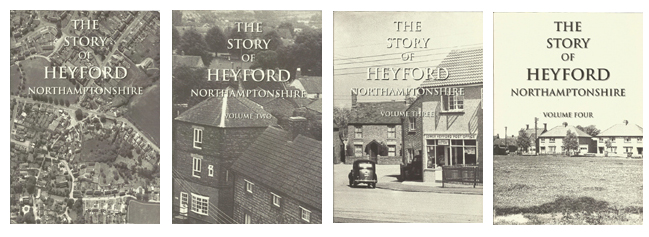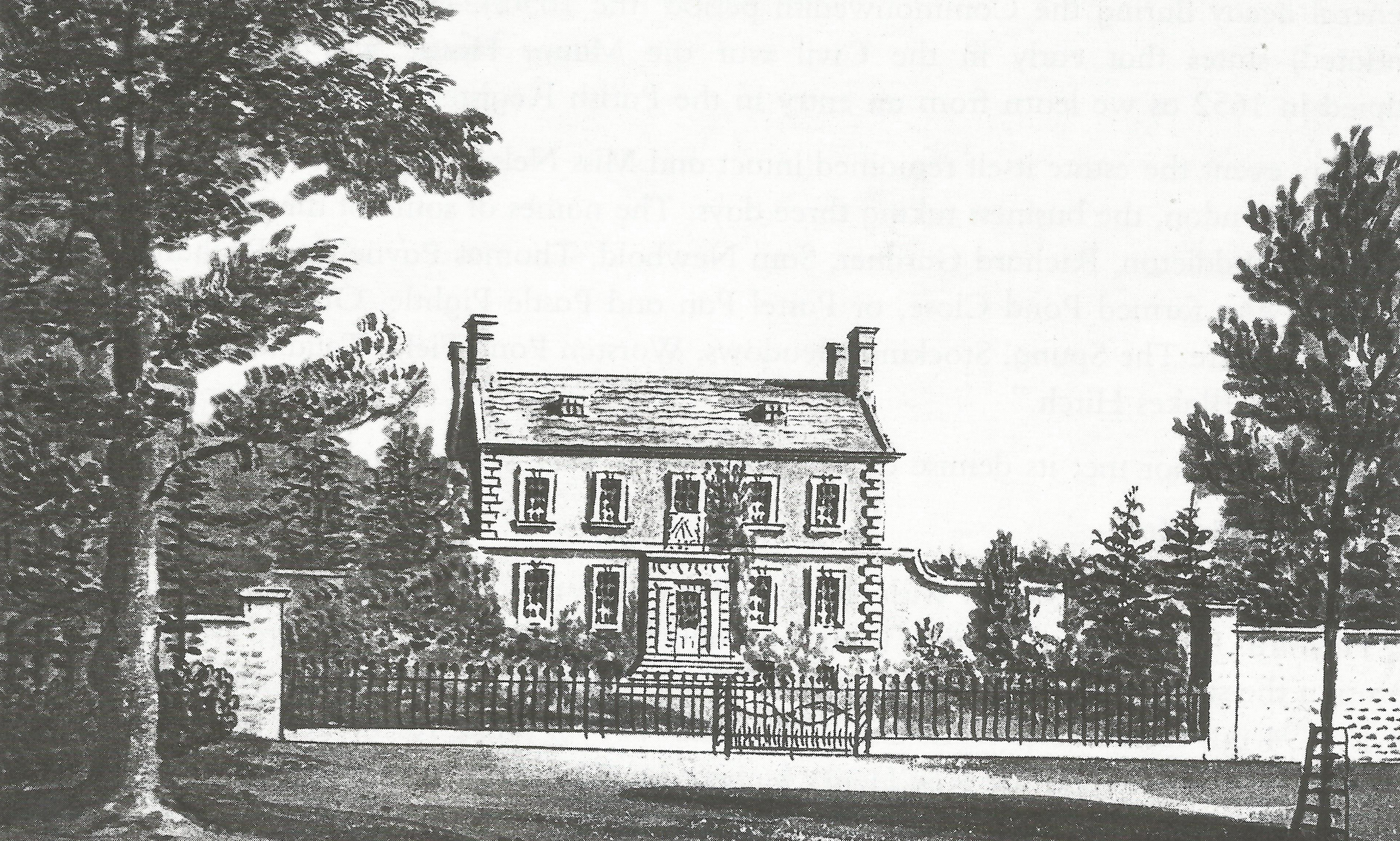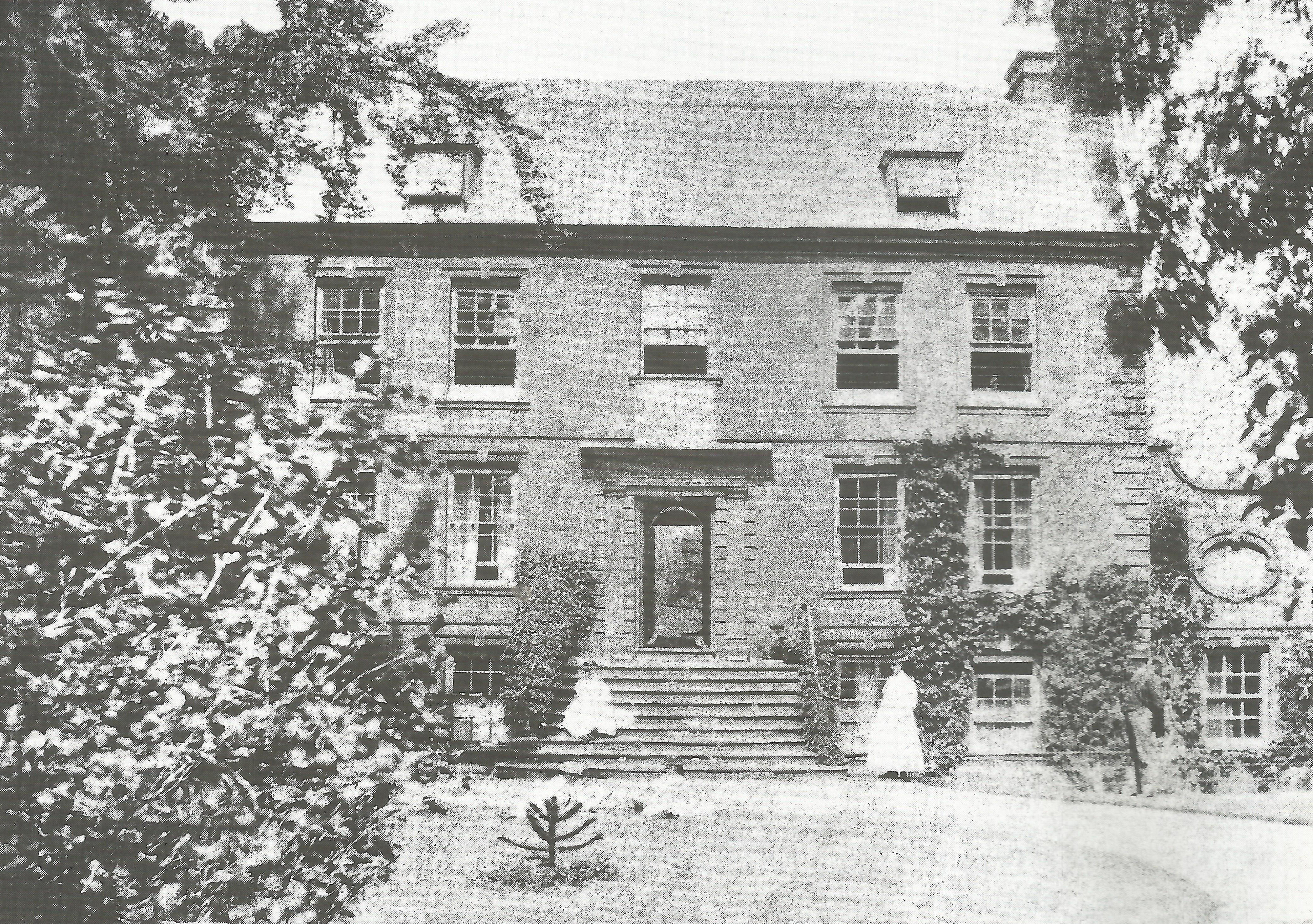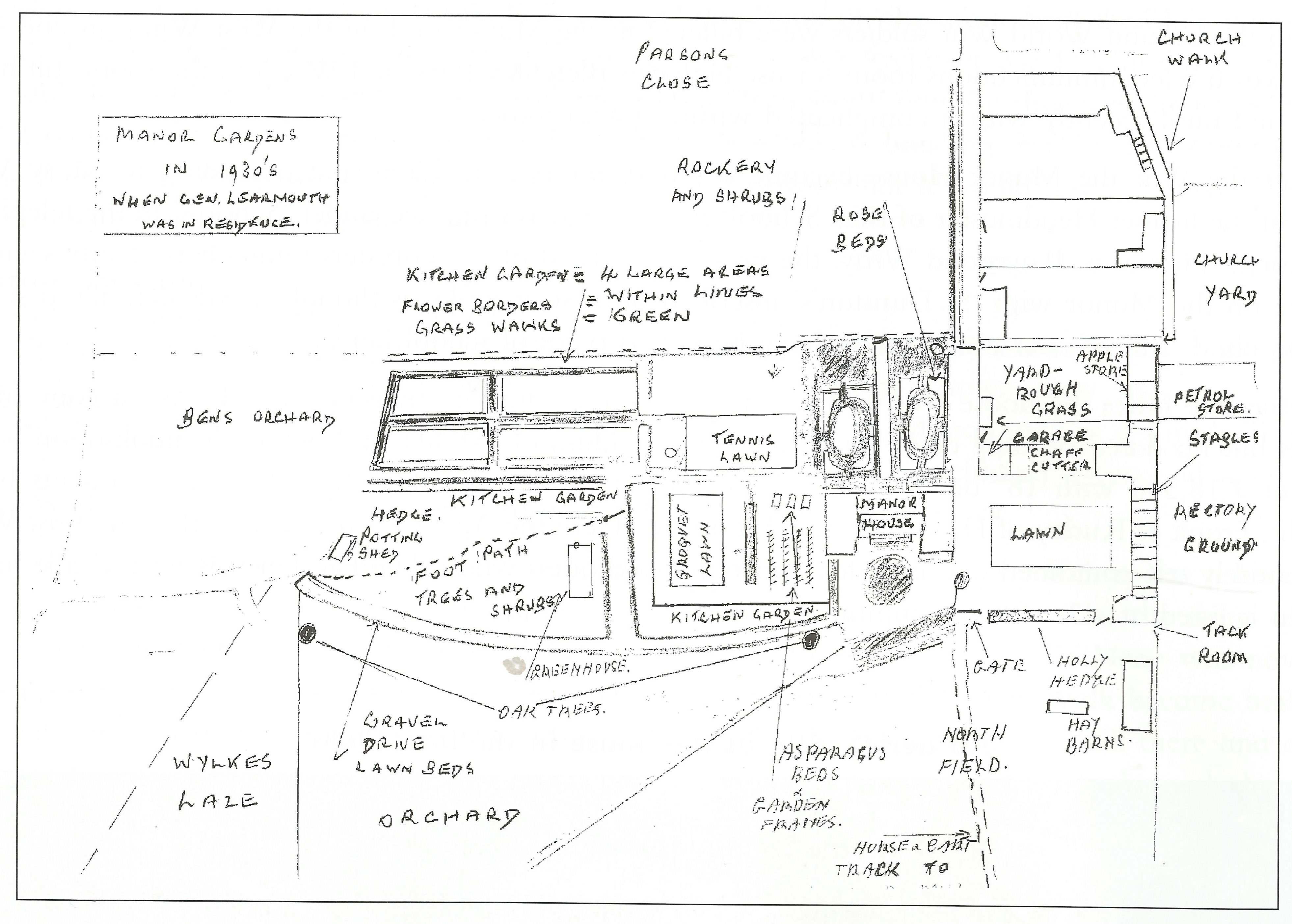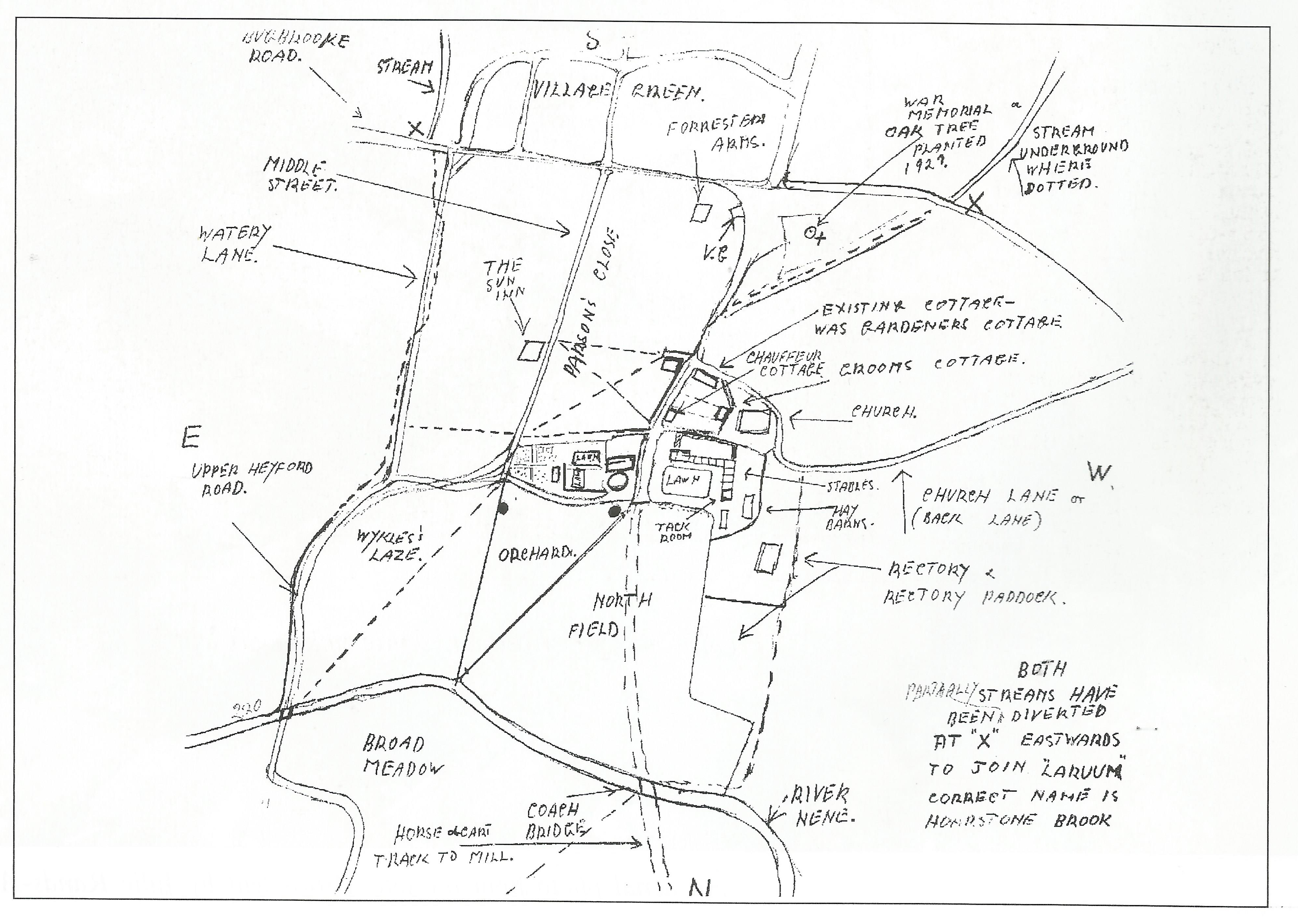Henry Isham Longden was born at Lamport Rectory on 26th September 1859. Following the death of Thomas Crawley in 1897 he became Rector of Heyford where he remained until his own death in 1942. He was a popular man in Heyford and in 1943, one year after his death, a book about his life entitled ‘A Northamptonshire Rector — The life of Henry Isham Longden’ was published by Joan Wake. The following is an extract from this book relating to his time at Heyford.
A Northamptonshire Rector – The life of Henry Isham Longden
Except for a brief interval during the war of 1914-1918, Heyford was Mr Longden’s home for the next forty-five years. The population of the parish was about 800. His rectory, though commodious and comfortable within, is externally an unattractive mid-nineteenth century building of local ironstone, overdone with gables and plate glass. The beautiful old church lies only some 100 yards away. His church services were, as to be expected, on the high church pattern. He introduced a choral communion service on the first Sunday of every month, at which he officiated investments, then rarely seen in a country church in the Peterborough diocese. He did not, however, indulge in extreme practices of a ritualistic type. The biretta which he had worn as a curate was discarded for a mortar-board on Sunday mornings. Though ready to suffer and possibly to fight for his opinions as other clergy had done, there was no occasion for it – his bishops left him in peace.
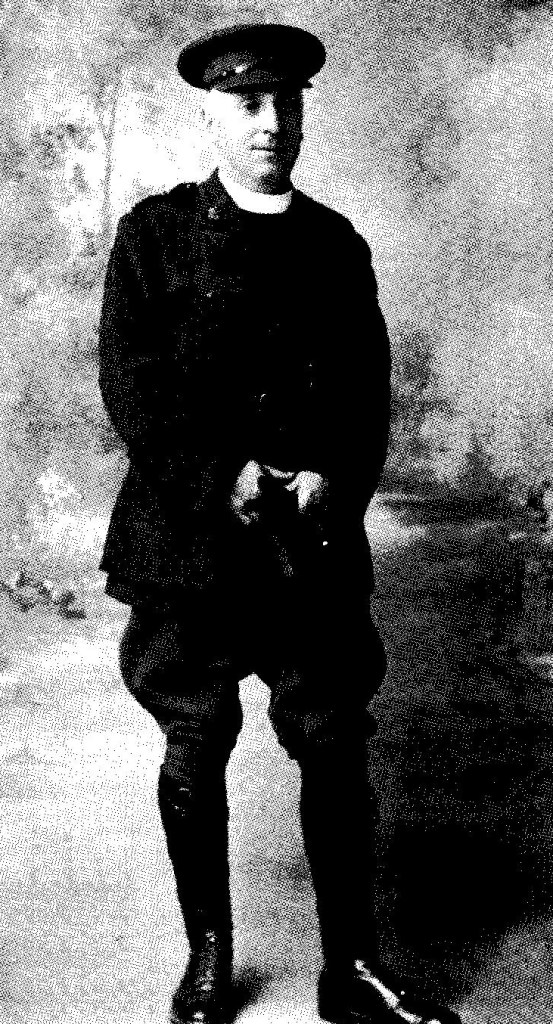
In the musical part of the services he was faithfully and ably assisted by Fred Potter, a man of musical ancestry and himself of no inconsiderable musical gifts. Fred had learnt to play the organ at the age of eleven, and officiated voluntarily as a boy at Shangton Church. At Heyford he became honorary organist and choirmaster, and so remained for forty-five years until his master’s death.
Mr Longden always attended the weekly choir practice and wrote out the lists of hymns and chants himself. Until the later years he taught in the Sunday School. On the friendliest terms with his parishioners, he took an interest in the social as the religious activities of the parish. One of his first acts was to collect funds for a church room which after six or seven years he succeeded in building. He founded a village cricket club, and for years was a member of the eleven. The village lads were very fond of him and he corresponded with many of them during the war of 1914-18. He had one or two pupils at the Rectory during the early years, including the Crawley boys from Stowe-nine-churches Rectory.
From the beginning Mr Longden always farmed his own glebe, though the management was left largely in the capable hands of Mr Potter, whose whole heart was in the work. A great reputation was made with the Heyford strain of Berkshire pigs, as also with the hunters, bred and trained on the place, for which purpose a short ‘steeple-chase’ course was laid out. The Hunters’ Improvement Society’s Show at Islington in March, at which many prizes were won, was an important annual event, which was much enjoyed by both master and man.
The Rectory garden, too, except in Winter time, was always ablaze with masses of flowers. The greenhouse also was full of carnations, begonias, cyclamen, and other flowering plants, all under the care and supervision of Mr Potter. He had from the first days at Shangton always lived under his master’s roof, but when in 1901 he married Miss Bertha Nightingale of Pattishall, he moved to a cottage in the village. This arrangement did not last long, and in 1902, to everybody’s satisfaction, they were allotted pleasant rooms at the Rectory. The bacon-curing, butter-churning, and domestic work of the house were carried out by this devoted couple. The affection and respect which they had for Mr Longden was heartily reciprocated, and the party at the Rectory was essentially a happy and contented one.
Rev Henry Isham Longden with Fred Potter

All the Longden children had been taught to ride at Lamport Rectory, but though he kept a horse at Shangton and was always fond of riding, as a young man Mr Longden did not shew any sporting proclivities. After a few years at Heyford, though not actually ill, his health was not up to the mark and Potter suggested that an occasional day with the hounds might do him good. He had bought his brother Arthur’s mare when the latter went out to the South African war in 1899, so now had a suitable mount. Mr Longden agreed, his health improved, and he soon developed a great love of the chase, though he was rather ‘a parson who hunted’ than one of the old-fashioned type of hunting parson like his great-grandfather the Rev. Vere Isham.
Heyford lies just inside the Pychley country, on the borders of the Grafton, but though he would take an occasional day with the former pack, Mr Longden always considered himself a Grafton man. The masters liked to see the sport patronised by the cloth, and Mr Longden’s ‘cheery courtesy and inveterate love of little jokes,’ as Mr Cruft writes, ‘made him ever welcome, even to the most anti-clerical followers of the hounds.’ Well-mounted and well turned-out in top hat, black coat and white cord breeches, he arrived at the meets accompanied by Potter, who besides enjoying the sport quite as much as his master, was thus able to school – and sell – the young hunters bred at Heyford Rectory. Then General Livingstone-Learmouth came to live at the parish, and for eight years after the war Mr Longden hunted regularly two days a week from the middle of November right through the season. (He never cub-hunted). The General used to drive him to the meets, Potter going on with his horse. One day with the Pychley – the meet was at Cottesbrooke – hounds had a great run from Maidwell gardens by Kelmarsh, Arthingworth, Braybrooke, nearly to Brampton Ash, and finally killed not far short of Market Harborough. The General was galloping along beside his Rector. “Padre, I can’t go on any more,” he called. “no man ever stopped in the middle of a run in the Pychley country!” shouted back the parson. Both sportsmen were in at the death, and rode home together the many weary miles to Heyford, gruelling their horses at the Ismays at Hazelbeach on the way.
Then one sad day in the March on 1928, when hounds were running near Preston Capes, someone inadvertently slammed a gate in front of Mr Longden. He tried to pull up but there was not time. His horse swerved and jumped the gate-post, throwing him onto his head on the hard road. Only his top hat saved him from breaking his neck. Potter was with him in a moment and took him home. This was the end of the hunting. The old horse was turned out to grass and Mr Longden was no more to be seen with the hounds. He was then in his seventieth year.
Fred Potter
The relationship between Mr Longden and Fred Potter was obviously a very close one. Joan Wake’s book includes an appendix headed ‘Faithful Service’ which includes the following words written by Canon F. S. Keysell, Vicar of East Haddon, and formerly Vicar of Weedon.
“No record of the late Rev H. Isham Longden at Heyford could be complete without a reference to his trusty servant and faithful friend for 50 years, Mr Fred Potter. In his early days at Heyford Mr Longden used to drive a horse and trap, but with the coming of motor cars and the increase of road traffic and consequent inconvenience, Mr Longden, like many others, though he never went in for a motor car, decided to give up driving and took to a bicycle. It was then, and not till then, that Mr Longden, acting on the advice of Potter decided to take to hunting, for though he had always been fond of a horse, he had never previously appeared in the hunting field.
Potter, who had always been a good judge of a horse, was soon able to fix the Rector up with the right sort of mount, and not feeling it advisable for him to go alone, decided that it would be in the best interests of all concerned that he should accompany his master in the capacity of second horseman. Henceforth for many years the Rector and his groom were generally to be found at meets of the Grafton hounds on Mondays and alternate Fridays, with an occasional meet of the Pychley on Saturdays thrown in. Though Potter made it his first business to see that his master was in the same field with the hounds not only at the meet, but also when they were running, and though he always seemed to be in the right spot when a lead was required over a difficult jump, yet at the same time Potter was generally to be found here, there, and everywhere. Did any rider take a toss and let go his horse? Potter was always there to catch the animal, and if need be to render first aid to its owner. Did anyone at the tail end of a hunt forget to shut a gate? Potter was always there to do the needful in time to prevent any cattle from straying. Did anyone lose their bearings and not know how to find their way home or the place where they had left their car? Potter was always there to tell them, and if necessary to point them by the shortest cut.
Potter soon came to be recognised as an authority on horseflesh, and it became widely known that in the stables at Heyford Rectory there was sometimes to be found a useful, well-trained type of hunter for sale. Would-be purchasers, however, were warned that it was no good going to Heyford with that object in view on a Sunday morning (which alas! had become the fashionable day for such transactions), because at that time the Rector would be standing in the pulpit and Potter would be sitting at the organ, where for many years he acted as voluntary organist and trainer of the choir.
A nasty hunting accident some fifteen years ago when he was then about seventy years of age ended Isham Longden’s hunting career, and Ruby, the much loved horse which had carried him so well for many years, was turned out in the Rectory field where he was allowed to end his days in peace.
Fred Potter, on the right
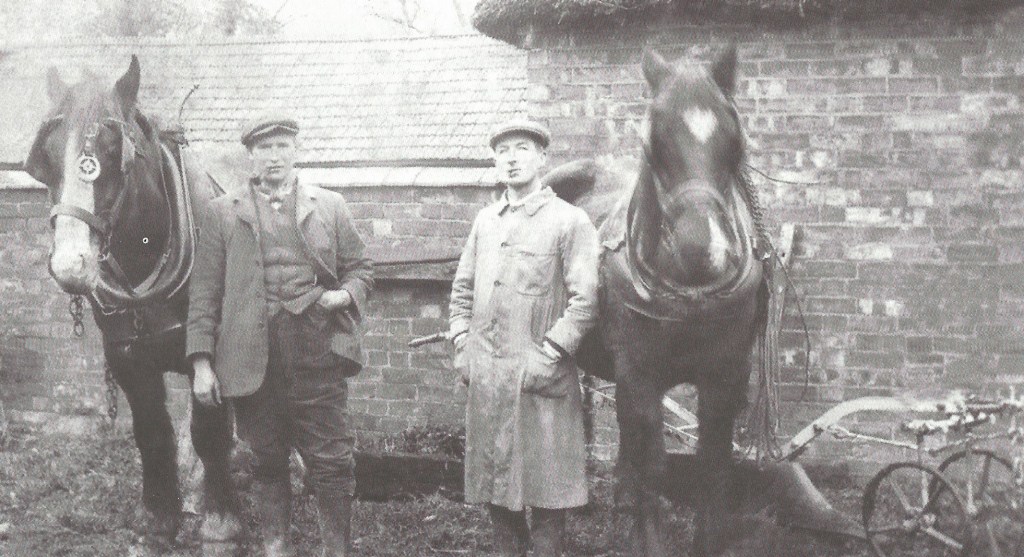
Photo lent by Charlie Masters
Potter, however did not allow himself to be downcast because he had no more days to look forward to in the hunting field, but turned his attention to gardening (with the exception of an occasional day’s shooting) and soon the Rectory garden became as well worth a visit as had been the stables in earlier days. On one occasion he was showing the beauties of the garden to the writer of this article. Potter remarked to him “There can be no such thing as a groom-gardener, you must be one or the other – you must concentrate!”
The passing of Isham Longden in the early summer of 1942 meant the breaking up of the home in which Fred Potter and wife had for over 40 years devoted themselves heart and soul to all that concerned the well-being of their master and friend, but it has not meant the breaking up of Potter.
The latest report about him is that he is now farming at Heyford on his own account, for though he is old in years he is still young in mind and body. His many friends will wish him every success and if, when the war is over and the country has settled down, ‘Grafton Mondays’ come into their own again, all followers of the hounds will know that there is one farm in that county at all events on which they can be sure of a hearty welcome, and on which the gates and fences will be in good order, and there will be no barbed wire to obstruct. Potter has, and always has had, that mark of the true sportsman that he likes to share his pleasures with others and to enable them to enjoy to the full the things which he has enjoyed so much himself.”
The words of Canon F. S. Keysell, former vicar of Weedon
The memories of Bill Nickolls
A number of local people still remember Mr Longden and Fred Potter, and talk about them with affection. Mr Longden was a kind man who could relate to people of all ages and backgrounds. If you were unwell in hospital he would visit you, ‘even if you attended chapel rather than church!’ The church in those days (19205 and 30$) was well attended. It was normal to go three times a day – morning service at 9.00am, bible classes in the afternoon and evening service at 6.00pm.
Bill Nickolls particularly remembers the choir. It was a full choir, singing all parts. Some of the attendees were Harry Eales, Fred Goodman, Mr Pearson, Charlie Foster, Nell Nickolls, Freda Tebbit, Doll Collins, Ethel Barnes, Bill Nickolls, ]o Nickolls, and ]ack Nickolls. Choir practice on Friday evenings Was run by Fred Potter who was a skilled and knowledgeable musician. He also made it fun. He used to send out to the shop for some sweets and they sometimes played games.
The will of the Rev. Henry Isham Longden
Henry Isham Longden suffered a stroke and finally died in the arms of his friend and servant Fred Potter on Sunday April 26th 1942 at the age of 82 years. The following details from his will are reprinted here from a newspaper cutting (date and source unknown).
‘The Rev. Henry Isham Longden of Heyford Rectory,.who died on April 26 last, left £11,168 9s 1d gross with net personalty £9,725 8s 7d. He left certain furniture and his horses and crops etc. to his faithful friend and servant Frederick W. Potter, and £1,500 upon trust for him for life, and then upon trust for his wife for her life. £300 upon trust to pay the stipend of the organist of Heyford Church. £100 to the rector and churchwardens to provide an additional bell for the church, and £50 to complete the church room.’
Fred Potter
Fred Potter moved to a house in Church Lane and kept a small dairy herd in the field opposite (now known as Rice’s paddock and partly built on). He continued to farm and to produce milk for the villagers. He died at Nether Heyford on November 10th 1964, aged 87 years and was cremated at Milton.
~~
Extract from “The Story of Heyford” – Local book series published in the late 1990’s
Volume 3 of 4 | Chapter 10 of 17 | Page 20 to 24

